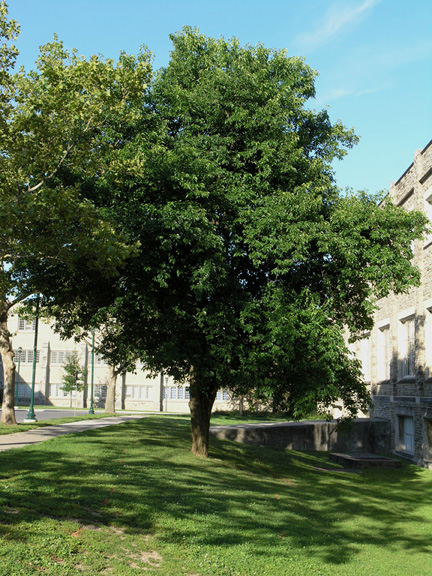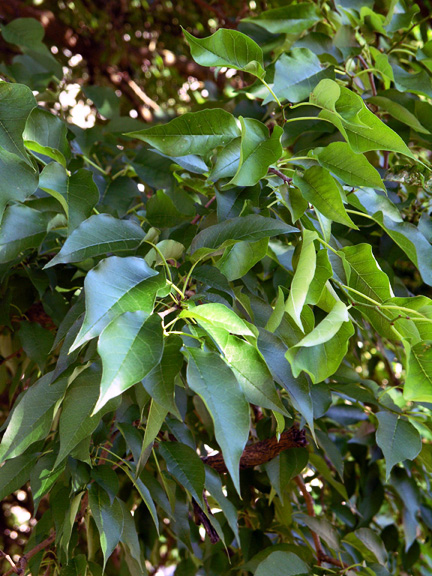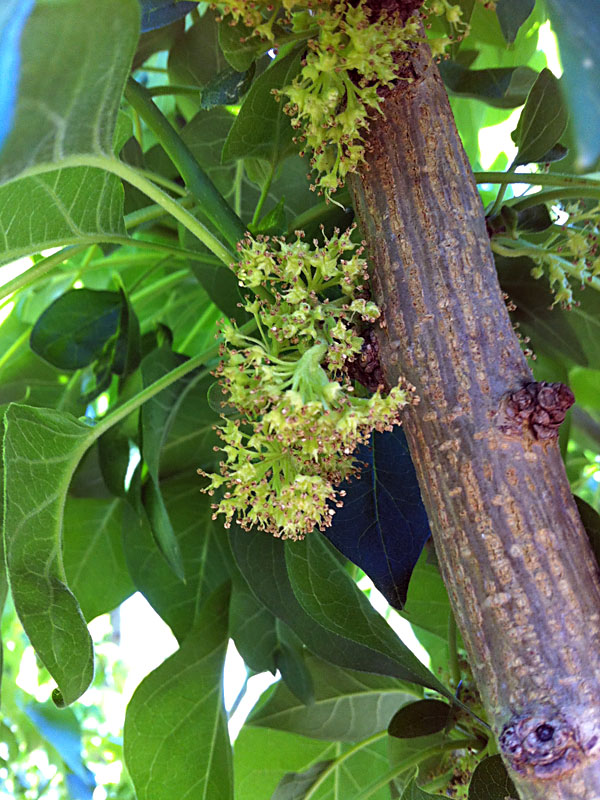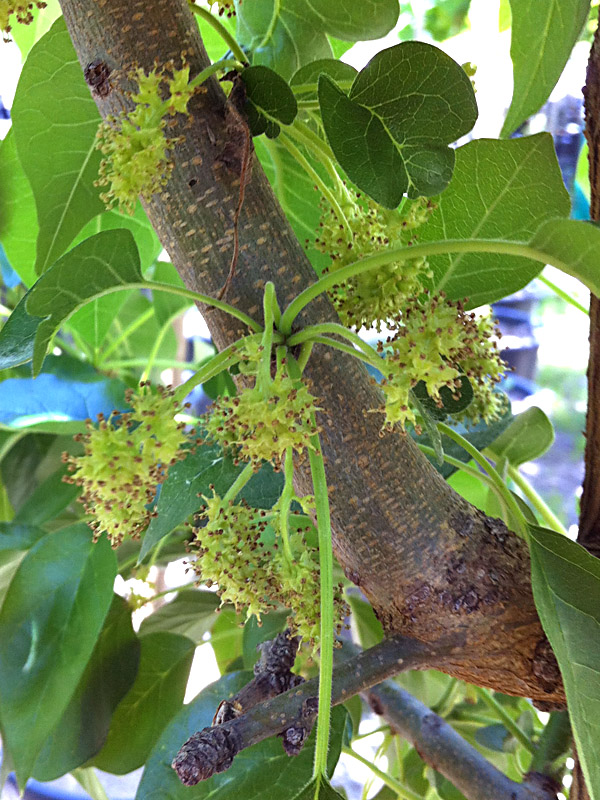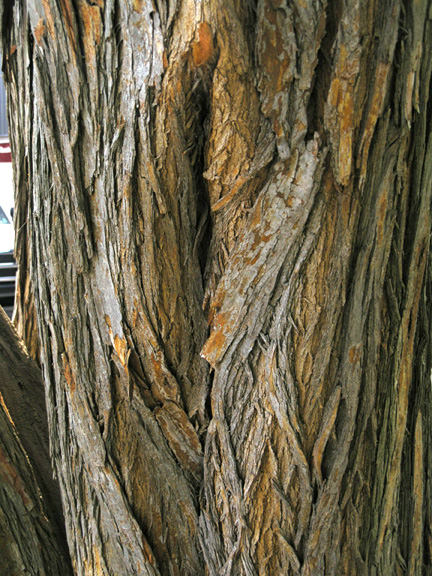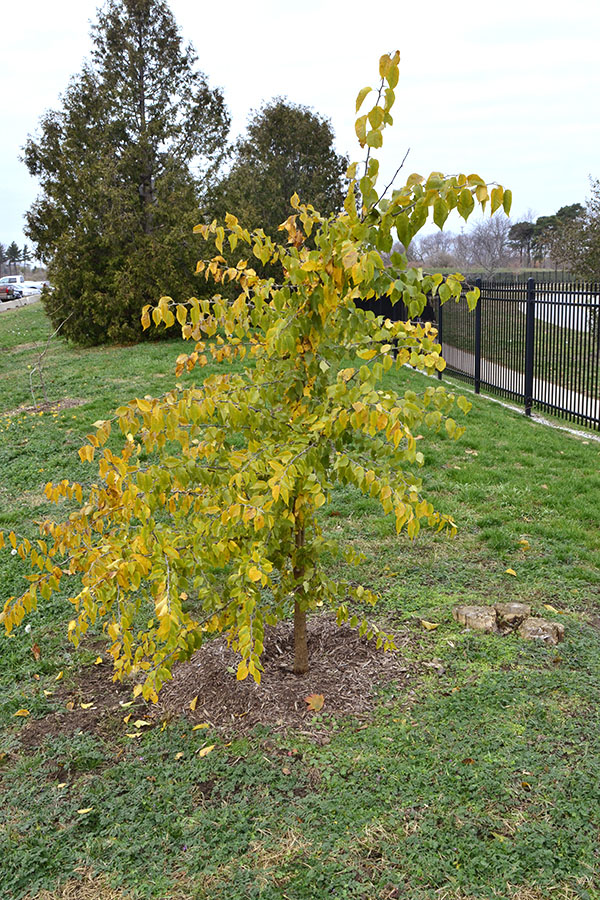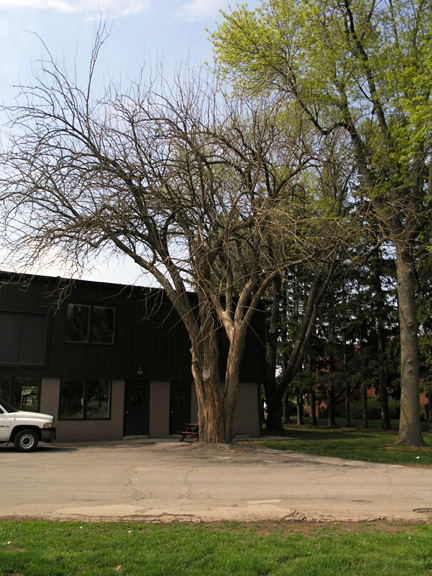| General Description | A deciduous medium-sized tree. Wood is valuable for making bows and is amazingly rot resistant. |
| ID Characteristic | Large yellow-green fruit, inner bark is orange and milky sap appears when spines or leaves are broken off.
|
| Landscape | Has been used for hedgerows in the plains states, has potential for rugged, polluted areas. |
| Pests | A few leaf spots have been reported but are not serious. |
| Notable Specimens | Ridgetown College, Ridgetown, Ontario, Canada. |
| Bark/Stem Description | On old trunks, the bark develops ashy brown with irregular longitudinal fissures and scaly ridges. The wood itself is of a characteristic orange colour. |
| Flower/Leaf Bud Description | Terminal, small, globular and brown in colour. |
| Leaf Description | Simple, ovate to oblong-lanceolate, alternate and are 5 - 12.5 cm long. Glabrous, lustrous bright to dark green and glabrous above. |
| Flower Description | Not ornamentally important, bloom in June. |
| Fruit Description | A large 7.5 - 30 cm wide globose syncarp of drupes covered with a mamillate rind and yellow-green in colour. |
| Colour Description | Leaves are bright, shiny medium to dark green in summer, autumn colour varies from yellow-green to a good yellow. |
| Texture Description | Medium in leaf; coarse in fruit and winter. |
